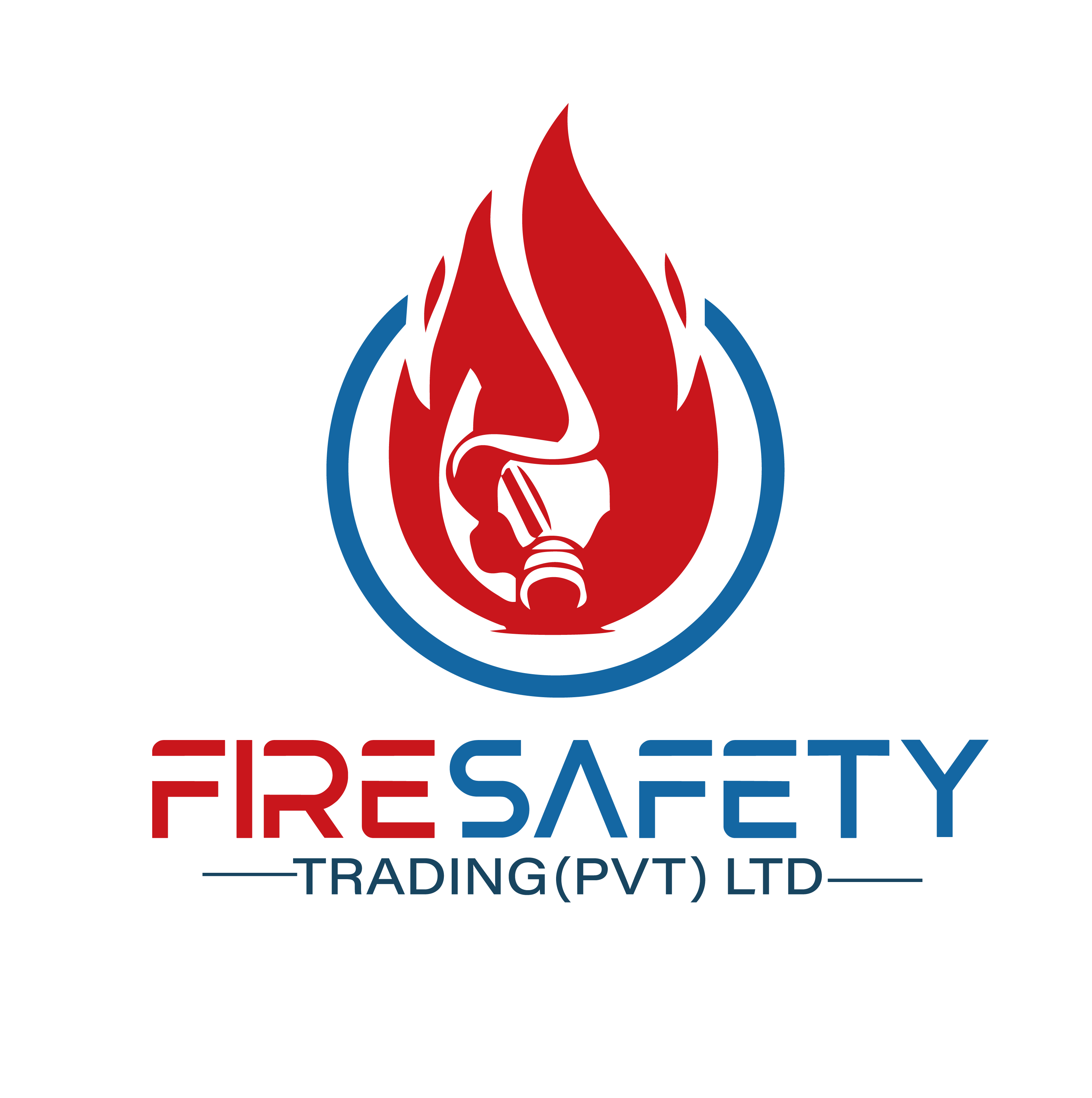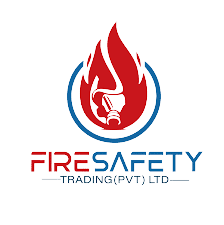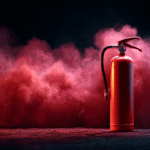Fire is a powerful yet dangerous element. It provides us with light, warmth, and energy, but when uncontrolled, it can become one of the most destructive forces in existence. Every year, thousands of lives and properties are lost due to fire incidents that could have been prevented or minimized with proper fire safety equipment.
This article explains in detail the major types of fire safety equipment, their functions, importance, and how they contribute to saving lives and property.
1. Fire Extinguishers
A fire extinguisher is a portable device that discharges a jet of water, foam, gas, or other material to extinguish a fire. It is the first tool used to tackle a fire before it grows uncontrollable.
Types of Fire Extinguishers:
Each type of fire extinguisher is designed for specific kinds of fires. Using the wrong one can make the fire worse.
-
Water Extinguisher (Class A):
Used for ordinary fires caused by paper, wood, or cloth. It cools down the burning material and removes heat. However, it should never be used on electrical or oil fires because water conducts electricity and spreads oil. -
Carbon Dioxide (CO₂) Extinguisher (Class B & E):
Suitable for electrical fires and flammable liquids. CO₂ displaces oxygen and suffocates the fire. It also cools the burning material without leaving any residue. -
Foam Extinguisher (Class A & B):
Foam forms a thick layer over flammable liquids like petrol or paint, cutting off oxygen supply. It is ideal for garages, chemical plants, and industrial areas. -
Dry Powder Extinguisher (Class A, B, C, & E):
Known as the “multi-purpose extinguisher,” it can handle most types of fires including gas and electrical fires. It smothers the flames and stops the chemical reaction that keeps the fire burning. -
Wet Chemical Extinguisher (Class F):
Specially made for kitchen fires involving cooking oils and fats. It cools the flames and reacts chemically with oil to form a soap-like layer that seals the surface.
👉 Important: Fire extinguishers must be regularly checked for pressure, expiry date, and nozzle condition. Employees or family members should be trained on how to operate them.
2. Fire Alarms and Smoke Detectors
Early detection of a fire is crucial for saving lives. Fire alarms and smoke detectors serve as warning systems that detect smoke, heat, or gas and alert people before the fire spreads.
Smoke Detectors:
These devices sense smoke particles in the air. When smoke is detected, an alarm sounds to alert occupants.
There are two main types:
-
Ionization Detectors: Detect small smoke particles, ideal for flaming fires.
-
Photoelectric Detectors: Detect larger smoke particles, ideal for smoldering fires.
Fire Alarm Systems:
These can be manual or automatic:
-
Manual alarms are activated by pressing a break-glass unit.
-
Automatic systems are connected to detectors that trigger alarms automatically.
Modern alarm systems are also connected to emergency services and can send alerts to smartphones or control panels.
3. Fire Sprinkler Systems
A fire sprinkler system automatically sprays water when it senses heat from a fire. Each sprinkler head is heat-sensitive and only activates in the area where the temperature exceeds a certain limit (usually 68°C to 74°C).
How It Works:
-
The heat from a fire melts the bulb or fusible link in the sprinkler head.
-
This releases water under pressure directly onto the fire.
-
Only the sprinklers closest to the fire activate — not the entire system.
Benefits:
-
Reduces fire damage drastically.
-
Provides continuous water supply for suppression.
-
Saves lives by controlling fire until firefighters arrive.
Sprinklers are widely used in shopping malls, hospitals, offices, and residential complexes.
4. Fire Blankets
A fire blanket is a safety device made from flame-resistant materials such as fiberglass or Kevlar. It is used to smother small fires by cutting off the oxygen supply.
Uses:
-
Covering small fires in kitchens, such as oil or gas stove fires.
-
Wrapping around a person whose clothes have caught fire.
-
Protecting oneself while escaping through a fire.
Fire blankets are easy to use — simply pull the tabs, cover the fire gently, and leave it until it cools down.
5. Fire Hoses and Hydrants
Fire hoses are flexible pipes used to carry water from a hydrant or fire engine to the fire. Fire hydrants are outdoor water supply points that provide water at high pressure.
Importance:
-
Essential for large fires where extinguishers are insufficient.
-
Provide continuous water flow for extended firefighting operations.
-
Usually operated by trained fire safety staff or firefighters.
Regular inspection ensures there are no leaks and that hydrants have adequate water pressure.
6. Fire Doors and Fire Curtains
Fire doors are specially constructed to resist fire and smoke for a specific duration (usually 30 to 120 minutes).
Fire curtains serve a similar function but are flexible barriers that descend automatically during a fire.
Functions:
-
Prevent the spread of fire and smoke to other parts of the building.
-
Allow safe evacuation of occupants.
-
Protect property and important equipment.
These doors must remain closed at all times or be equipped with automatic closing systems.
7. Emergency Lighting and Exit Signs
During a fire, electricity often fails, and thick smoke reduces visibility. Emergency lights and exit signs help people find their way out safely.
Key Features:
-
Powered by backup batteries or generators.
-
Strategically placed along corridors, stairways, and exit routes.
-
Clearly marked with “EXIT” or directional arrows.
Regular testing ensures they work during blackouts or emergencies.
8. Fire Safety Kits and Personal Protective Equipment (PPE)
Fire Safety Kits contain essential emergency tools such as first-aid items, fire blankets, small extinguishers, and flashlights.
For firefighters and emergency responders, Personal Protective Equipment (PPE) is crucial.
Includes:
-
Fire-resistant suits made from Nomex or Kevlar.
-
Heat-proof helmets with visors.
-
Insulated gloves and boots.
-
Breathing apparatus to protect from smoke and toxic gases.
These ensure safety and efficiency during rescue or firefighting operations.
9. Fire Safety Training and Drills
Fire safety is not just about equipment — it’s about people knowing what to do.
Regular fire drills and training sessions teach employees or residents how to react in case of a fire.
Training Covers:
-
How to use extinguishers properly.
-
Safe evacuation procedures.
-
How to assist children, elderly, or disabled persons.
-
Whom to contact in an emergency.
Practicing these skills ensures quick and calm response, reducing panic and chaos.
10. Maintenance and Inspection
No matter how advanced the equipment is, it’s useless if not maintained properly. Regular inspection ensures everything works during real emergencies.
Maintenance Steps:
-
Check extinguisher pressure and expiry dates.
-
Test fire alarms and sprinklers monthly.
-
Ensure hydrants and hoses have adequate water pressure.
-
Replace batteries in smoke detectors.
-
Keep escape routes and exits clear.
Proper maintenance not only meets safety regulations but also saves lives.
Conclusion
Fire safety equipment is not just a set of tools — it is a lifeline during emergencies.
Each item, from the smallest smoke detector to the largest sprinkler system, plays a crucial role in protecting life and property.
Being prepared, trained, and vigilant can prevent tragedies. Remember:
“Fire doesn’t give a warning — but being prepared can make all the difference.”





